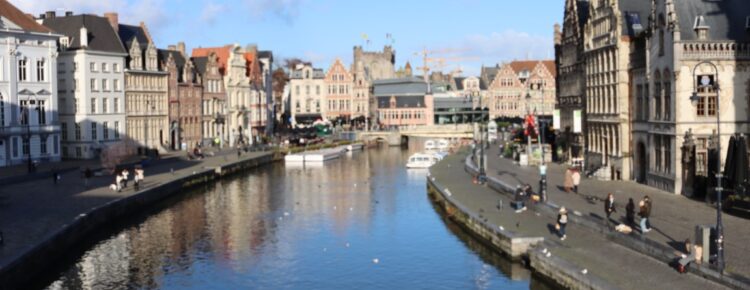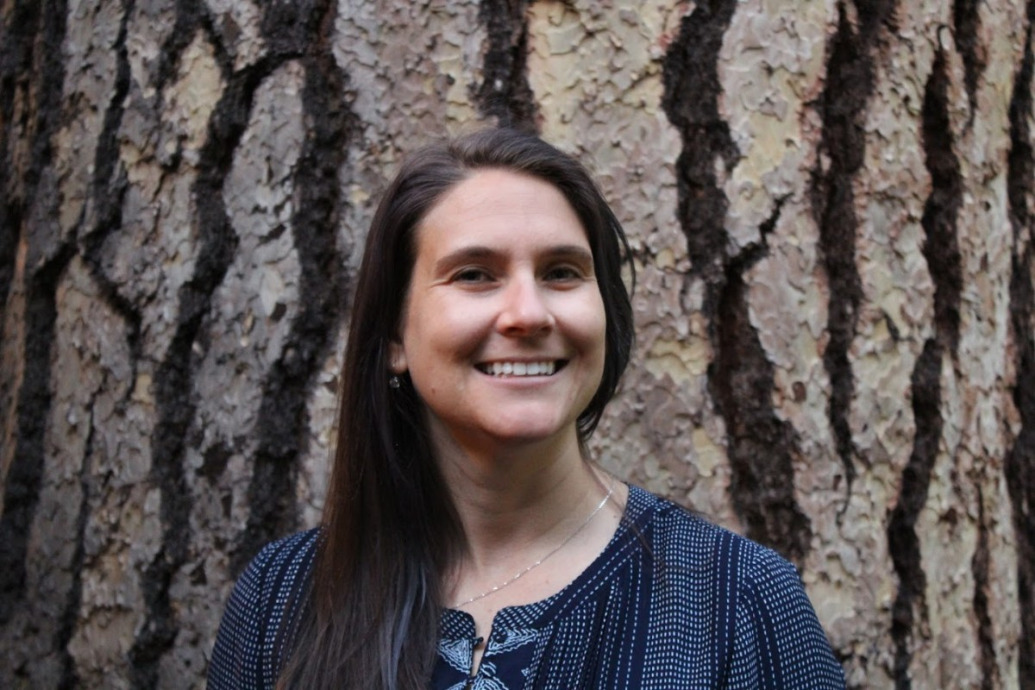One of the benefits of staying at Art de Sejour was the included breakfast, which especially was appreciated since we decided to use our one full day in Brussels to daytrip to Gent. Large breakfasts with coffee are always good on travel days. Mario prepared it artfully and offered simple yet generous choices of fruit, muesli, eggs cooked your way, and an assortment of breads, as well as coffee.
After breakfast, we made our way back to the train station, on schedule to make our 130pm Gent walking tour. We simply had to stop to see what outfit the Mannekin Pis was wearing – nothing in fact! See previous blog for the history of this odd statue.

Since our first day where we booked first class train passage we had pivoted to second class which was just as comfortable and fairly unoccupied. In 30 short minutes we were in Gent. We were greeted with a sea of bicycles at the train station, as we arrived on our daytrip to Gent.

Rather than take the bus into the old town, and given the rain had briefly stopped, we decided to walk the 30 minutes via a pleasant park and river route. This was a day of 35,000 steps!

We killed a little time walking about and taking pictures in advance of the tour, and met our guide, Sofia, in front of a hostel near Saint Michael’s church. We had another small group, which was always nice. She remarked that the tour groups were often small here as, most people bypassed Gent and chose Brussels, Bruges, or Antwerp instead. Gent was a university town that we also found extremely livable – big but not too big, with a charming, old town and plenty of history. More livable than Bruges, which was more frozen in time.
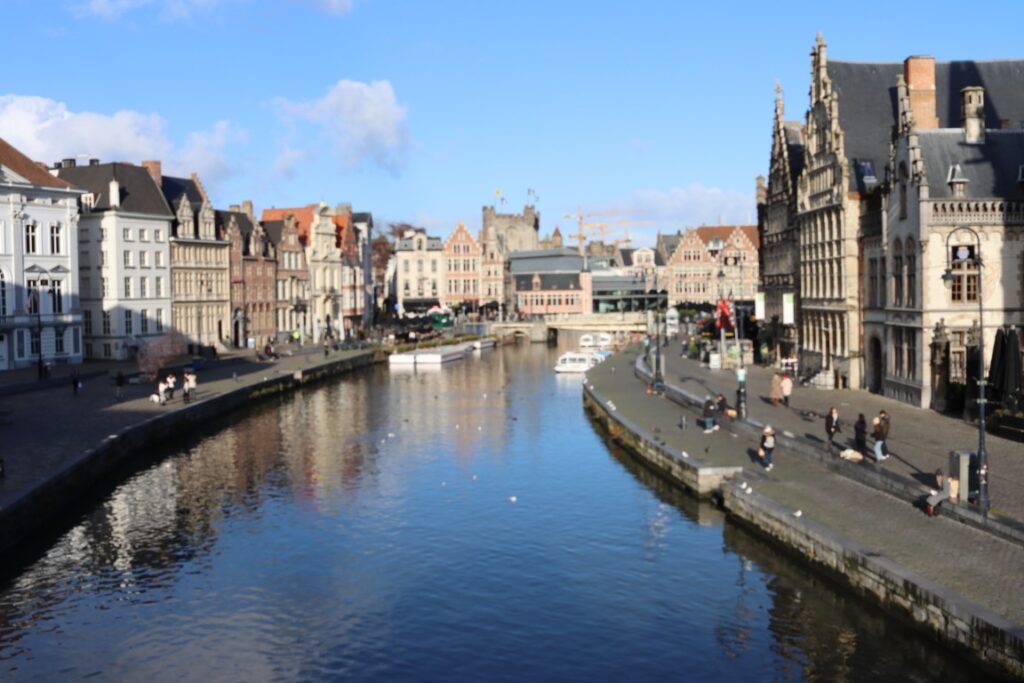
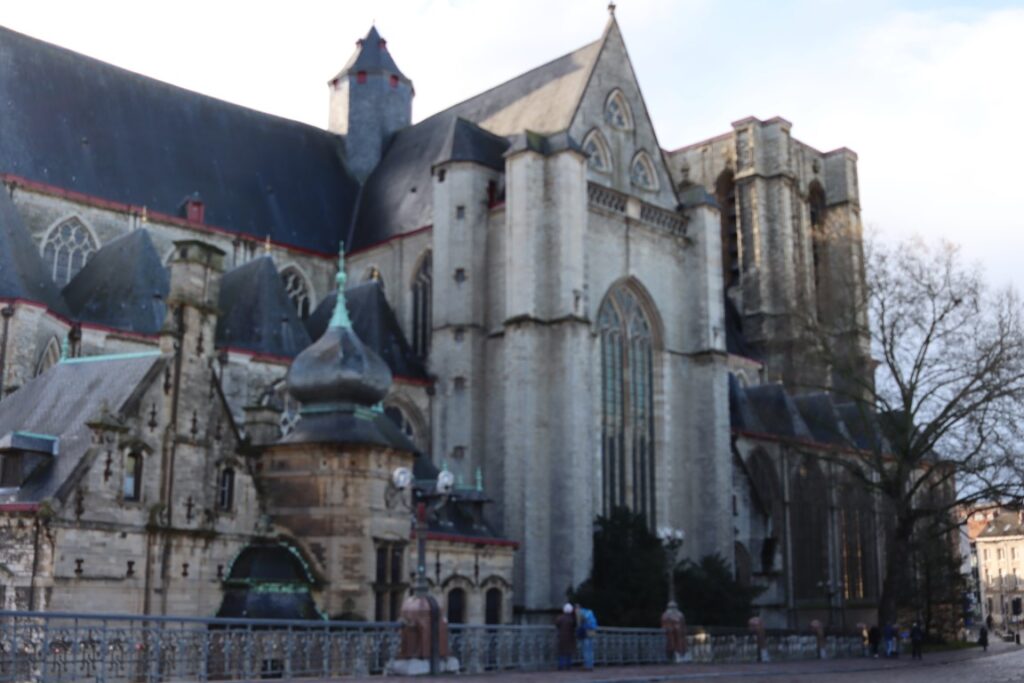
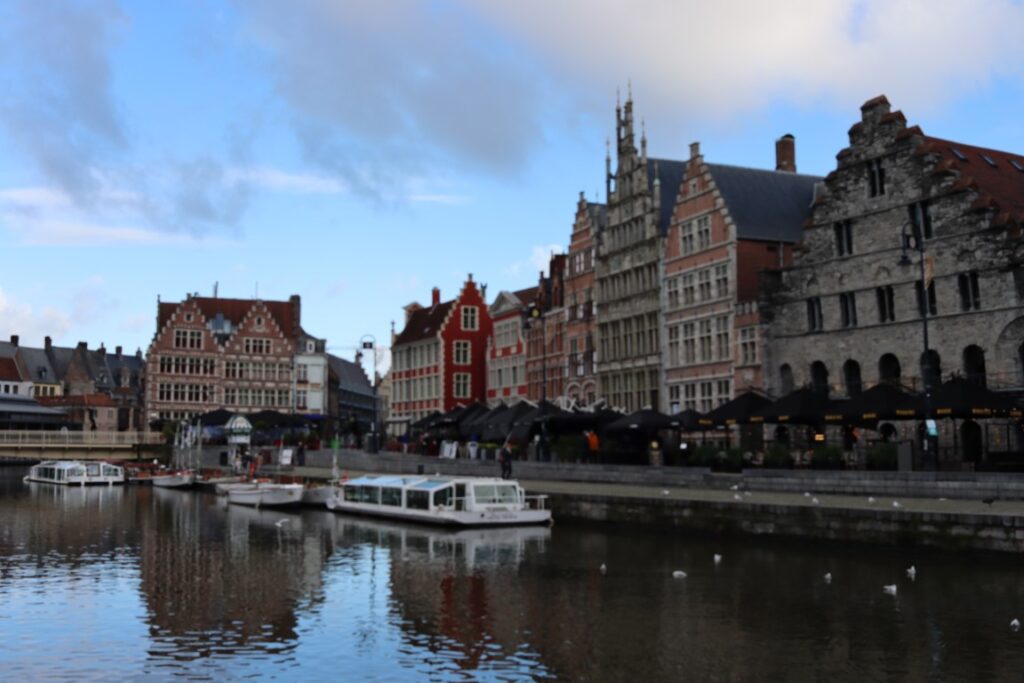



Our tour started along the river, where Sophia pointed out the architecture as well as a perceived lowness of the riverfront buildings, as a result of waste being thrown outside, leading to a buildup of material over time which formed a higher sidewalk area with buildings sunken in a step or two down. Gent, same as Bruges and Brussels, flourished through trade, with easy access via the canals to the North Sea. A lot of similar merchant history and sponsorship of art and architecture as we saw in Bruges. We learned about the three towers of Gent that were supposed to be four (they ran out of money), as well as some stops along the canal for sailors (the two swans pointing in opposite directions, indicating a brothel, next door to a house with a golden ship on top which is wear the sailors would be boarded). She also noted the backside of the 1913 World’s Fair building, where portraits of native Americans and Japanese geishas drew outrage at the time (and continues to). We also stopped by a fountain built for the World’s Fair which offered free drinking water for all creatures, humans and animals.
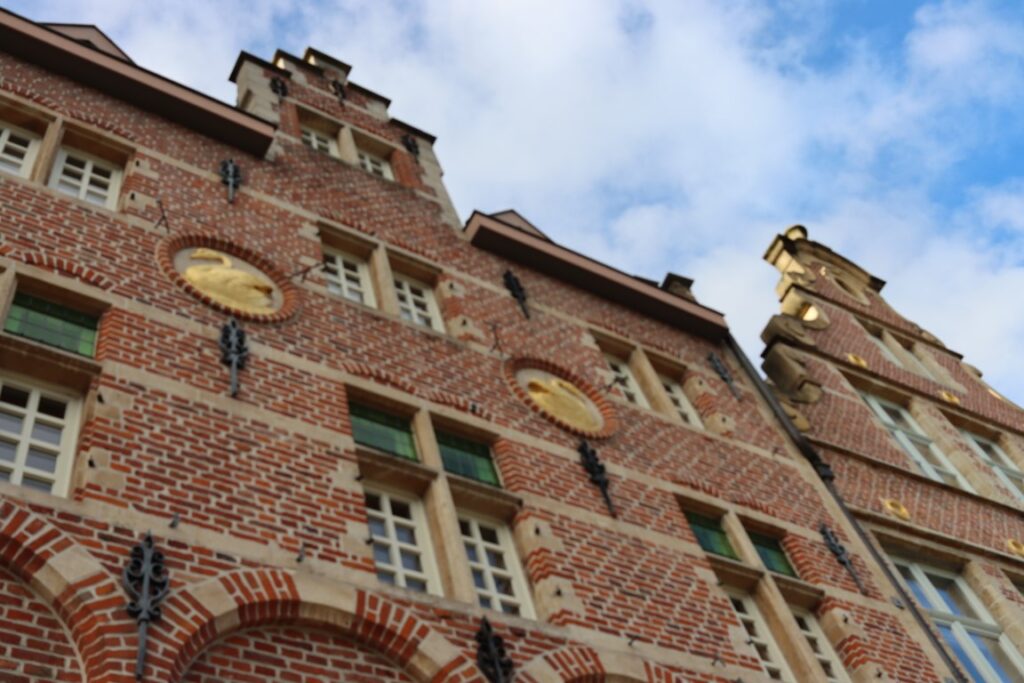
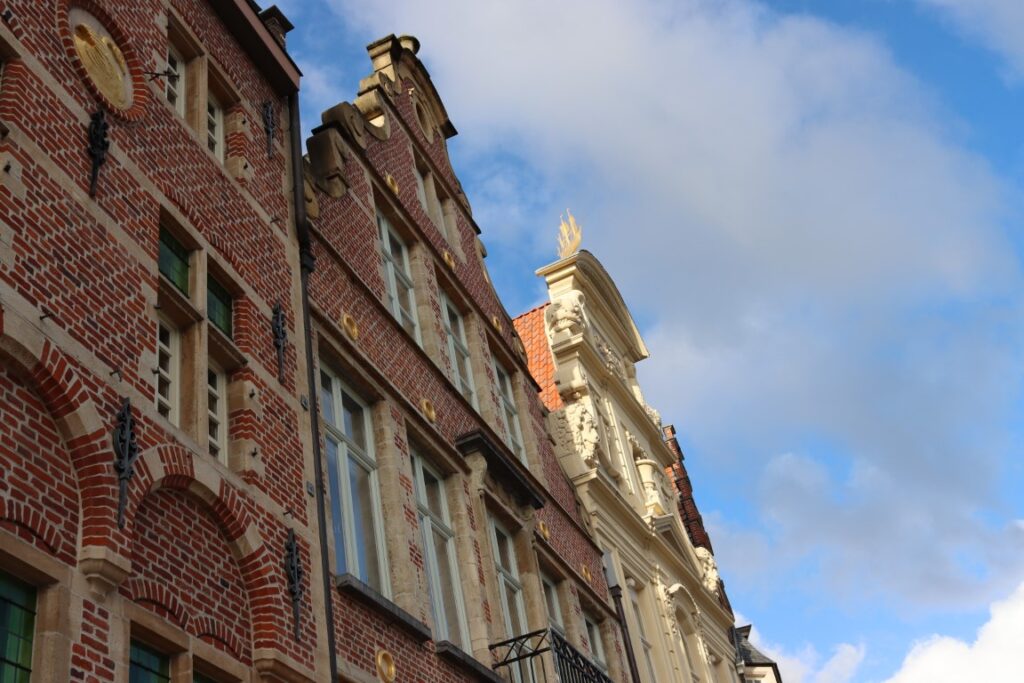
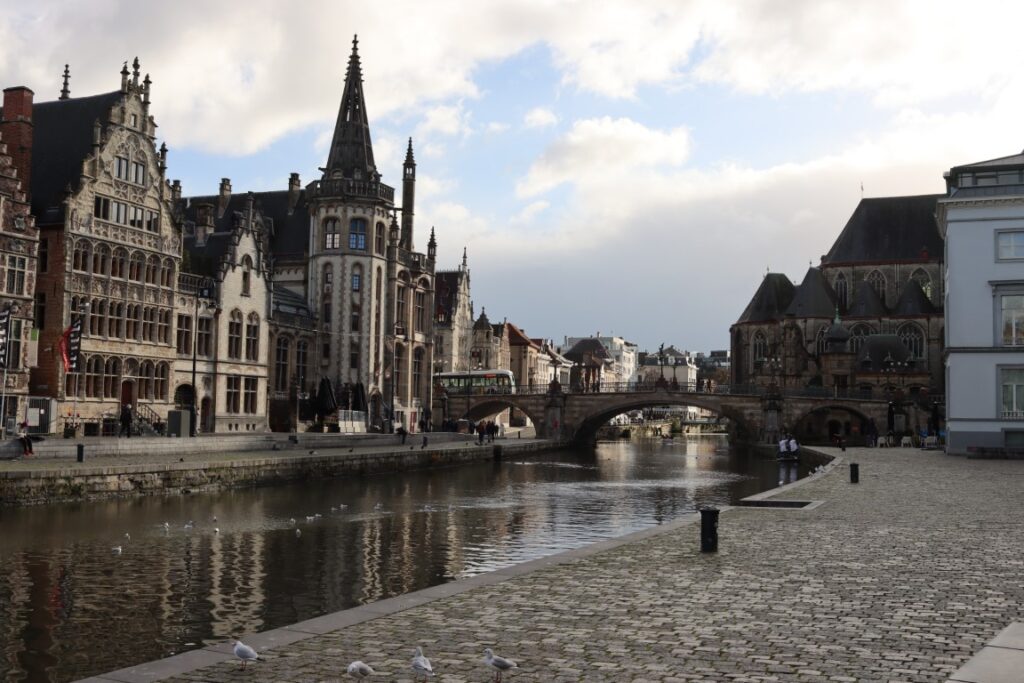
We continued by the castle, where Sofia pointed out that not much actually happened there, other than students taking it over for a few days in protest to taxes being raised on beer (a compromise was eventually reached). The square directly in front of the castle was called the Hanging Square, since the Duke of Gent could witness public executions while looking out from the castle. In recent times, a new art installation set out to change the moniker of the square from The Hanging Square to The Living Square. Several lampposts were placed around the square, and when a baby was born, Gent residents could register it with the city and those lampposts would be illuminated to celebrate the birth.


Along the way to our next stop, the Friday Market square, Sofia pointed out a beer place that offered cheese with mustard, as well as the strongest beer in the city (which we of course later tried). In the Friday market square, we learned about the statue in the middle – Jacob van Arteveld. It was strategically placed to face England due to the technological innovation that he imported and copied during the 14th century, when Jacobs was a city leader and wealthy merchant, and also when Gent was on the rise and began printing works in English.
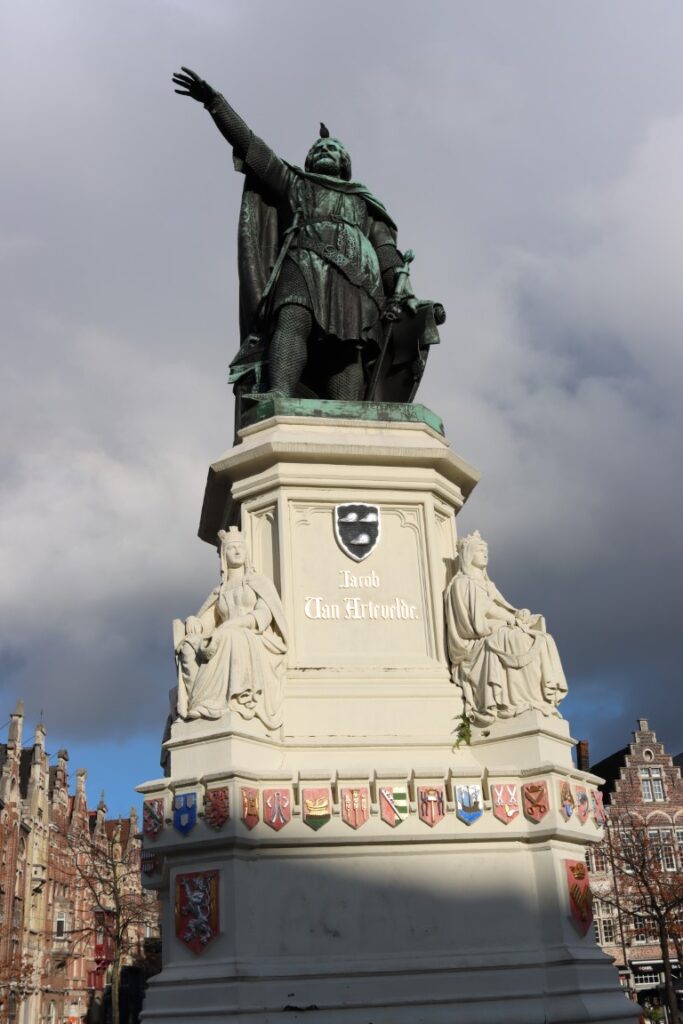
The Friday Market square was obviously an important square for trading, holding a public market every Friday where goods were bought and sold. In the corner of the square, we learned about an ingenious Belgium inventor who needed a way to keep his beer from sloshing around when he was on the canals, and thusly invented a new type of beer glass to do just that. You could try it and also purchase it at the brewery which Sofia pointed out, but unfortunately it wasn’t open in our timeframe. It became so popular with tourists, that a tradition evolved whereby the patron must leave their shoes with the barkeep in exchange for the glass, and would receive their shoes back once the glass was returned.





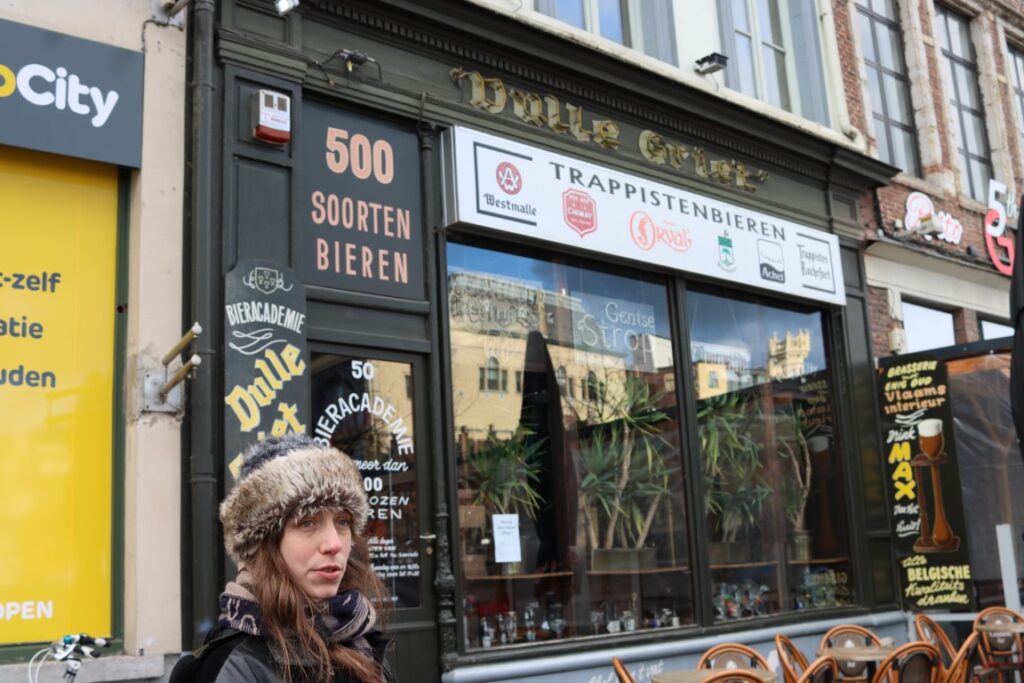
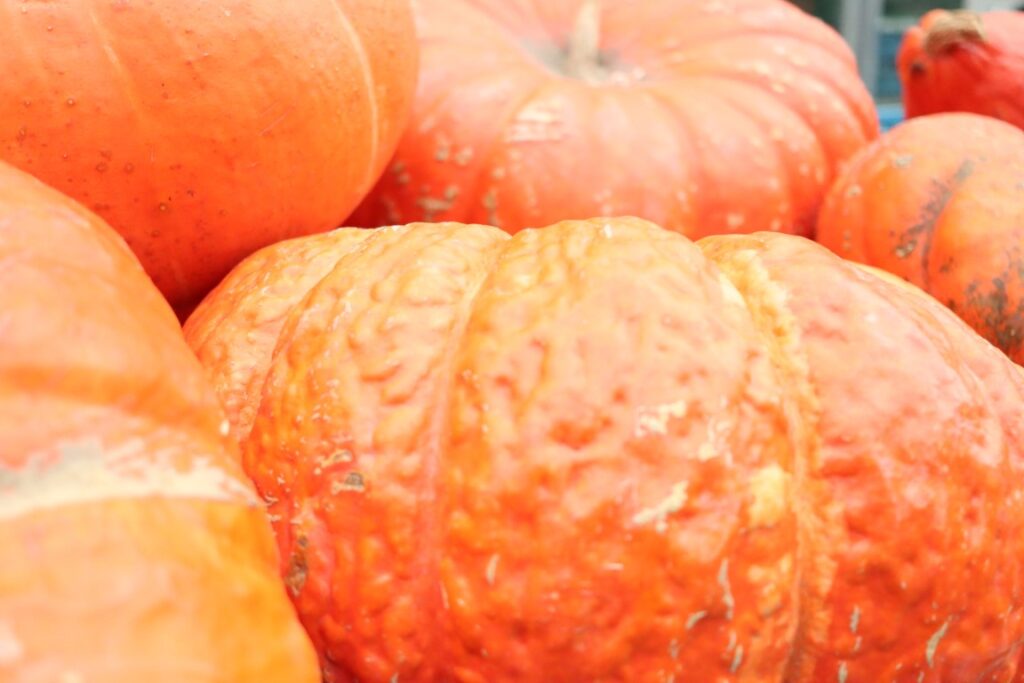
On our daytrip to Gent, we traversed an interesting alley covered with graffiti on our way to the parliament building. Gent was a city full of nooks and crannies, like Bruges.
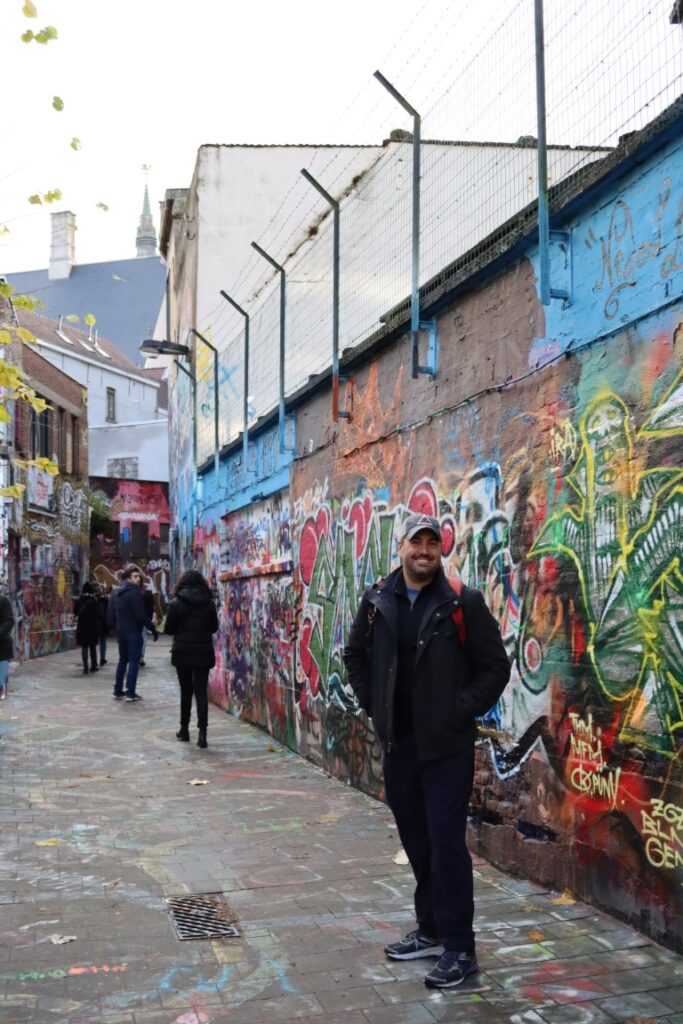
We saw the parliament building, which had several types or architecture from Gothic to Renaissance reflecting additions over the years, as well as the ambitions of one of the Duke’s to invade Italy. The merchant class did not support this Duke or his expansion ambitions, and as a result he took his revenge by inviting the Spanish to invade, capturing the merchant class, and parading them naked around the city until they supported him. The continued to defy him so he ultimately executed them. This led to the decline of Gent in the 17th century. This Duke was very ugly as a result of inbreeding, and you could see his statue on the Gothic revival portion of the parliament building, made extra ugly to remind the people of what happened.



Our penultimate stop was the Saint Niklaus Church complex where she informed us about the Rubens and Van Dyck paintings inside, and that it was worth touring, as well as pointing out a modern building that disqualified the city from UNESCO protection (buildings and squares throughout the city were protected, but not the city itself). Apparently the city built it a few years ago and it was very expensive, so they decided not to take it down once UNESCO city protection was revoked. We thought it was an eyesore amongst the medieval art.


Finally, we observed the post office building that was built for the World’s Fair, and after the tour we went inside to see some of the portraits mentioned previously.
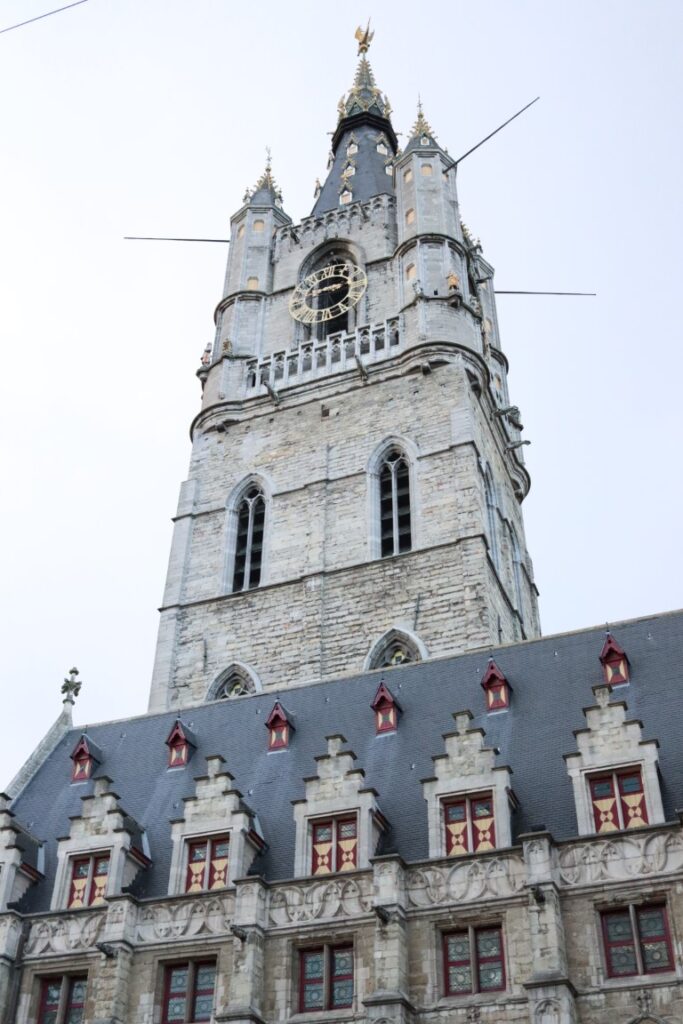
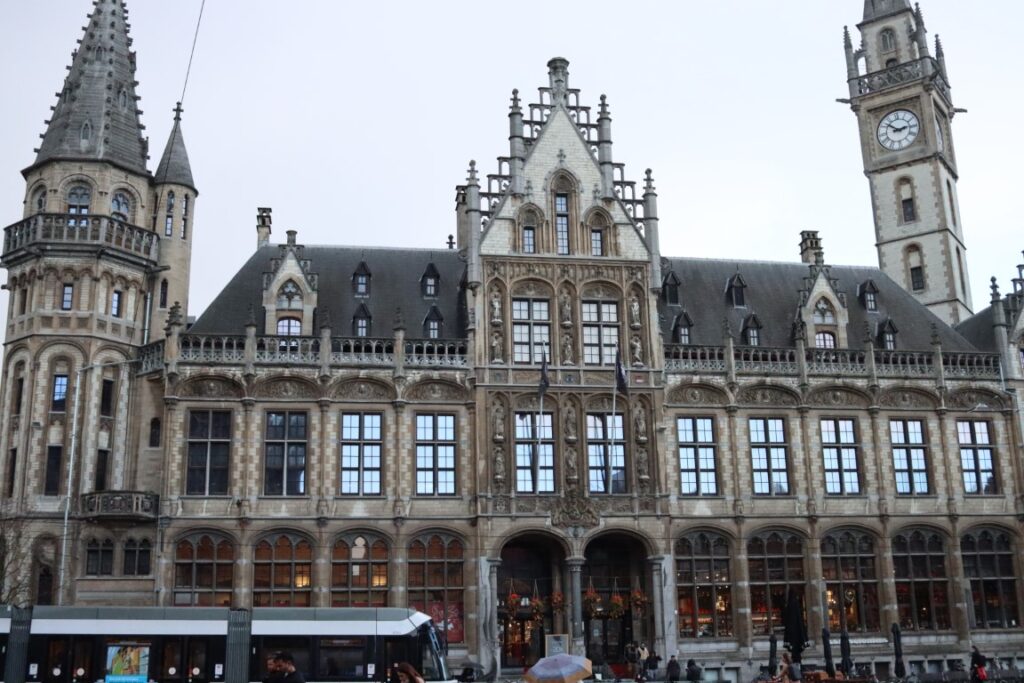
And, we found this advertisement simply hilarious.
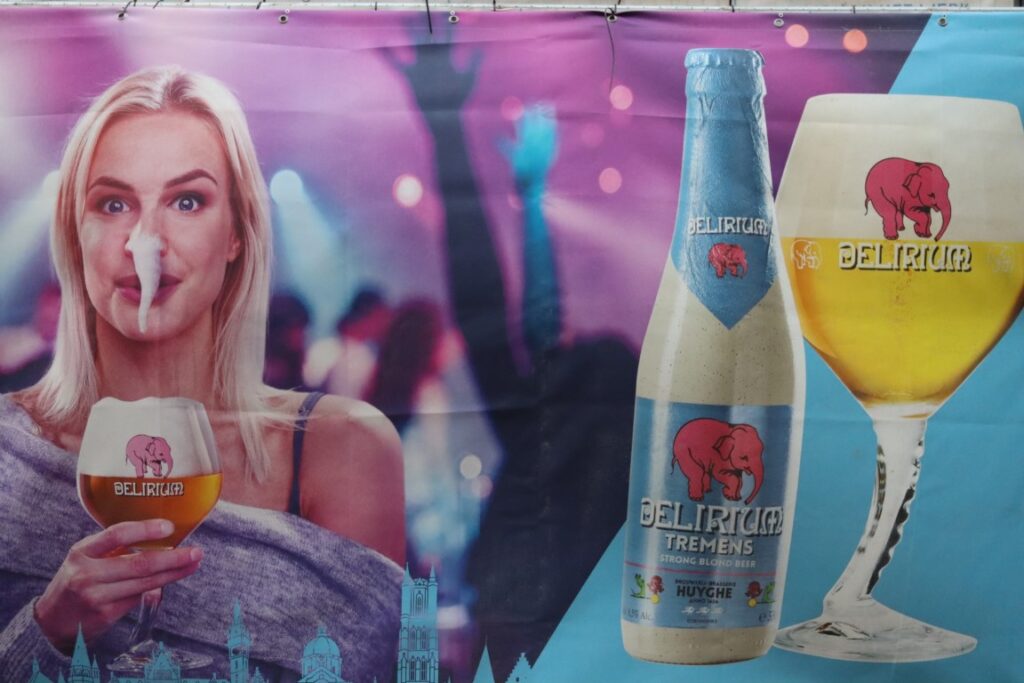
We parted ways with the group and headed to the brewery that Sofia recommended (Het WaterHuis), with the 13% alcohol Klokke Roeland beer that you weren’t allowed to have more than 3 of (the menu said ne!). We ordered 3, but after 1 I was already drunk. Brendan was sauced on 2. After failing to convince the bartender to sell us a glass, we decided it was a good time to book the church tour to see the Belgian primitive masterpieces of Rueben and Van Dyck.



As we approached Saint Nicholas’s church, we saw an ironic advertising for the Mystic Lamb (one of the famous paintings we were about to see) that said “OMG Mystic Lamb!”, obviously a marketing campaign by the church (although slightly irreverent!?) to bring in the younger generation. There was a man with a bubble machine in the square, making the whole scene seem slightly surreal.

We were both thoroughly sauced when we entered, which made the visit even better. We snagged one of the last available appointments to tour for the day at 415PM (it closed at 5PM), so decided to forego the AR headset and tour, and instead breeze through the crypts and use the facilities. The exhibits were not well labeled, and to our dismay it was hard to figure out what we were looking at without the technology assistance. We also did not feel that the AR equipment placed over your head was COVID safe.
The famous paintings were upstairs, and we were ushered upstairs by one of the staff as he explained that the painting would begin closing soon and if we wanted to see it, we’d better get going. Upstairs, we were greeted by a Rubens painting first off, but could barely see it because the lighting was so dim. It also wasn’t labeled and no information was offered. The highlight of the visit was the Hubert and Jan Van Dyck Mystic Lamb painting, which we were able to observe in advance of it closing. The coolest part, however, was the actual process of closing the painting. It was a triptych with art on the backside as well as the front side, and the process of closing it completely took about 10 minutes, revealing the art on that back that otherwise would have been hard to see. There was a lot of detail in this painting, but again we noticed some shortcuts that van Dyck took, replicating faces, especially on women. Our guide earlier had said that the detail was so exquisite, that the reflection of one of the church’s windows (where it was originally supposed to be located) was painted into a woman’s pearl. Since then, the painting had been moved. We were not able to get close enough to observe that detail, but it was cool nonetheless. We also appreciated one of the ushers, an elderly gentleman, explaining a few things about what we were looking at, including the images of the patrons within the triptych. While it was a little rushed, we saw what we wanted to see and later Googled all the information we missed in person. And, we thoroughly enjoyed the experience of going from the bar to the church.
Afterwards, we took in some night scenes on our daytrip to Gent, wrapping up our visit.
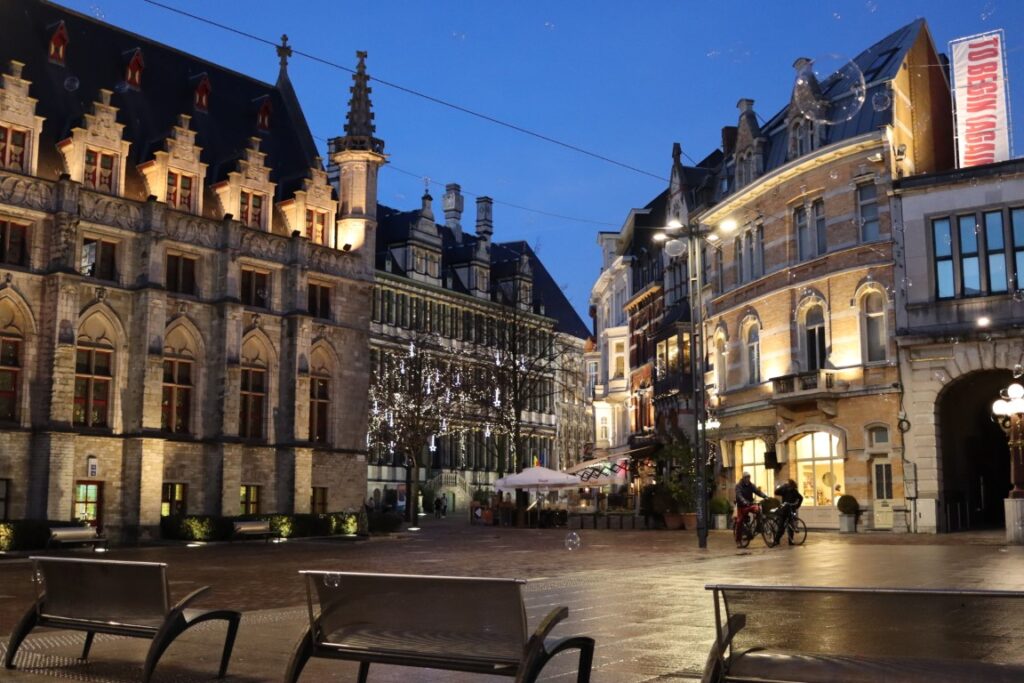

That was that for Gent, so we took a different route back to the train station via the city this time around and took the 530PM train back to Brussels. 30 minutes later were at Brussels central Station, and 10 minutes after that we were back at the hotel.
